Miniature Aloe Species
Aloe vera is a popular houseplant with a rosette of variegated prickly leaves, the diameter of which can be 30-90 cm depending on the variety. It is compact and fits well into the interior of the room, but there are also more miniature options.
Aloe jucunda is the smallest variety: the width of the rosette is 7-8 cm. Outwardly, the plant is similar to its closest relative, Aloe somali. It has bright green leaves with multiple light spots. It develops slowly and prefers rocky substrates.
With proper care, it begins to bloom in the second year of life: it forms several tall peduncles with a cluster of miniature pink buds 2-3 cm long.
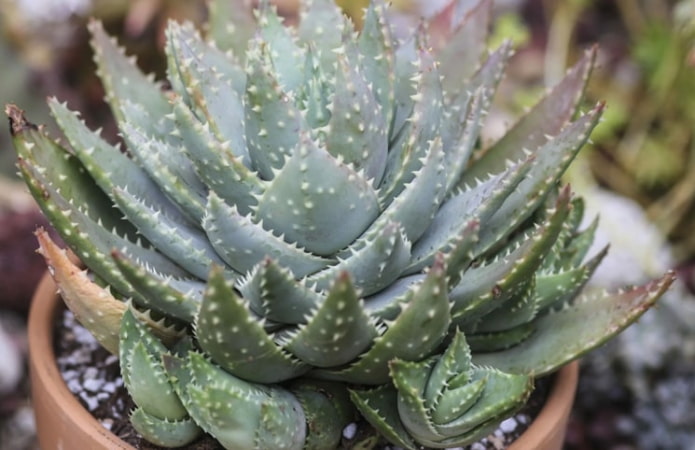
Aloe brevifolia, or Aloe brevifolia, also belongs to the dwarf varieties. Its homeland is considered to be the Republic of South Africa, where it grows along the coast at altitudes from 0 to 150 m. The plant forms a compact rosette of 30-40 green lanceolate leaves 7-11 cm long. They are flat at the bottom, with short light thorns protruding at the top.
Aloe brevifolia is an endangered species, but today it is widely cultivated indoors. The plant develops well on rocky soil and loves a lot of sunlight.
Echinopsis semi-naked
This is a spherical cactus no more than 10 cm high, which is considered endemic to Bolivia and Paraguay. It has a thickened shoot of dark green color, on which beautiful white flowers are formed in the spring and summer. It is very effective, therefore it is popular among gardeners.
Echinopsis loves a lot of light, but gets used to it gradually. It does not need abundant watering and can withstand prolonged lack of moisture.
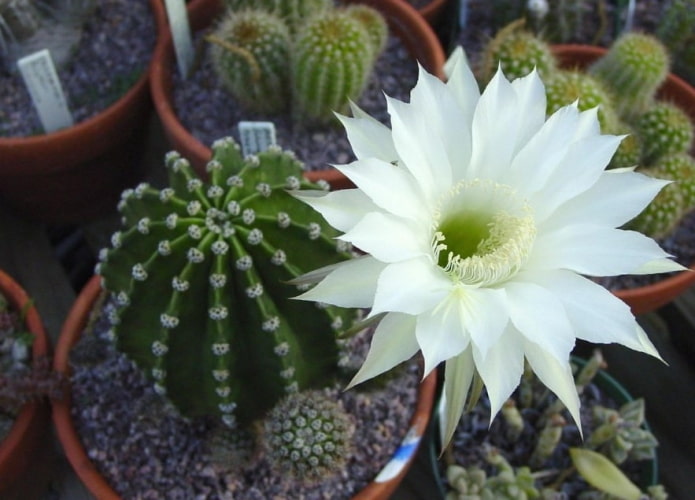
African violet
In their natural habitat, Saintpaulias reach a size of 40 cm, but when grown indoors they remain miniature and do not exceed a height of 7-8 cm. They are usually kept in small pots and placed on a windowsill in the southern part of the apartment.
African violets are easy to care for: they need moderate watering and warmth. With proper care, the plant blooms annually, forming beautiful dark purple or blue buds.

Lithops
Often called pebble plants, tiny lithops can easily be mistaken for stones. They usually do not exceed 8 cm in size, and many of them do not grow more than 3 cm.
Lithops belong to the class of succulents that are undemanding in care. They develop best when no one interferes with their environment, very often several living stones are kept in one pot. It is enough to moisten the dried soil and periodically ventilate the room.
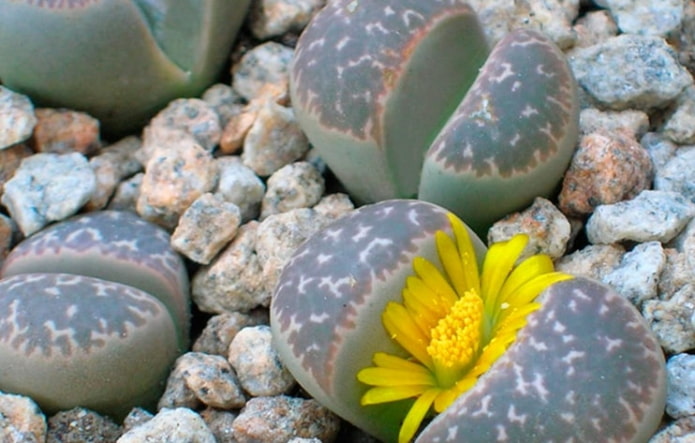
Oxalis
This compact plant can have different colors, including burgundy and emerald green. It has a dense crown with triangular patterned leaves. When grown in a pot, the “trefoil” usually grows up to 15 cm in height and 20 cm in width.
Oxalis is quite capricious: it needs good lighting and regular moderate watering. However, an excess or lack of ultraviolet light and moisture leads to rapid wilting of the foliage.
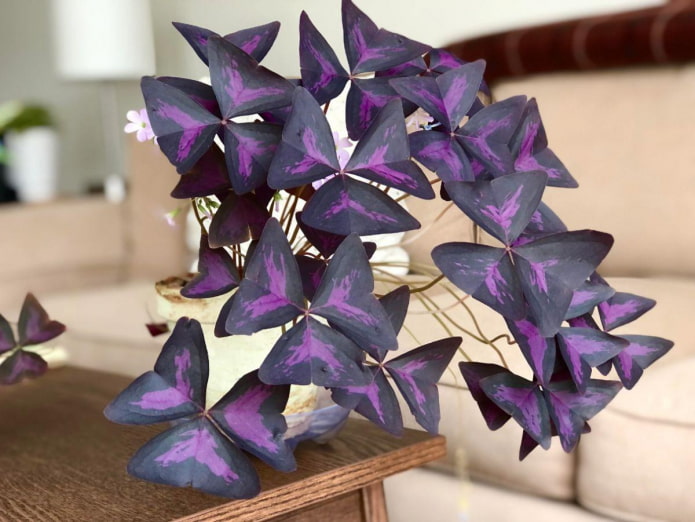
Fenestraria clavatum
The small succulent Fenestraria clavatum grows in South Africa, where it is found mainly on sandy and limestone soils of coastal areas.
The plant forms several flat leaves 7-8 cm long, which become convex closer to the top. At the top of each of them there is a transparent “window” that helps to scatter ultraviolet light. Fenestraria clavatum is a geophyte: in natural conditions, the reduced stem and the main part of the leaves are constantly covered with sand. This allows succulents to withstand exposure to direct sunlight and survive long periods of drought.
Pilea peperomioides is easy to care for. Indoors, it prefers rocky and well-drained soil, plenty of direct sunlight, and air temperatures between +15 and +19°C. The plant does not need to be watered, but the soil should be slightly moistened when it dries out.
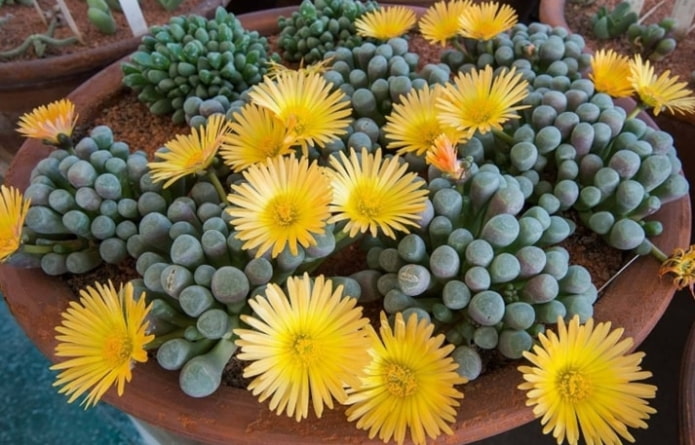
Chinese money tree
The natural habitat of Pilea peperomioides is the mountainous regions of China and the West Indies. The plant was first discovered by Western naturalists at the beginning of the 20th century, and by the middle of the century it had become widely cultivated indoors.
The Chinese money tree is an evergreen perennial that forms a bush of many rounded leaves about 10 cm long. In the wild, it reaches a height of 30 cm, but when grown indoors, it has more compact dimensions.
Cultivated varieties rarely bloom, no matter how well they are cared for. But the dense, spreading foliage compensates for this shortcoming.
The perennial is resistant to adverse environmental factors: it tolerates prolonged periods of lack of moisture and temperatures down to 0°C. Prefers well-drained soil and moderate watering.
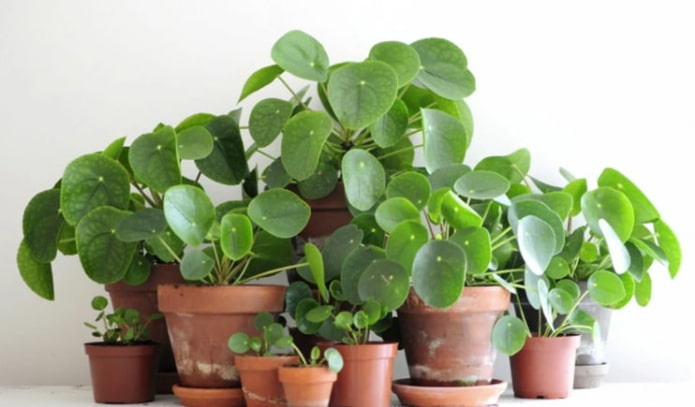
Hypoestes leafy spike
This is a small herbaceous plant native to the African island of Madagascar. In the wild, it is a large perennial about 50 cm tall, but indoors it does not grow more than 25 cm. It is cultivated as an ornamental plant.
Hypoestes leafy spike forms multiple shoots with ovoid dark green leaves, the surface of which is covered with spotted patterns of white, yellow, and pink shades. During the growing season, fused bracts with 1-3 large buds are formed. However, the flowers are removed, otherwise the shoots become very depleted, stretch out and quickly fade.
The flower prefers a temperature of +22…+24°C in summer and at least +18°C in winter. It needs a lot of bright diffused light, regular moderate moisture.
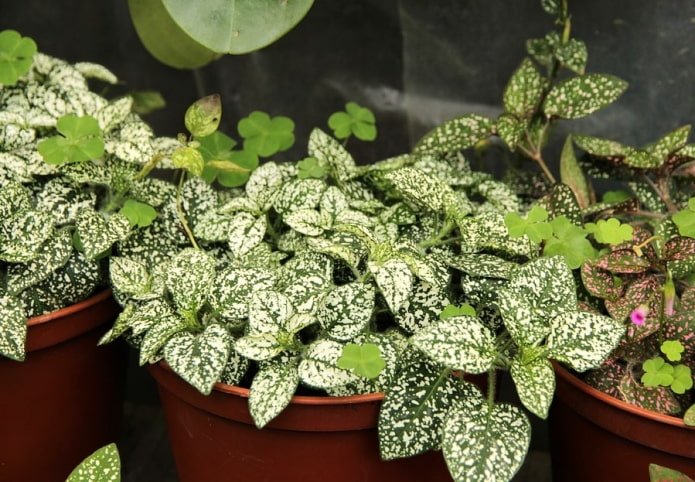
Common Asparagus Fern
Although the plant is often called a fern due to the presence of large pinnate leaves, it belongs to the Asparagus family. It grows in South Africa, but is widely cultivated in temperate latitudes as an indoor perennial.
In the natural environment, Asparagus setosa has long, hard stems ending in soft, leaf-like cladodes (modified shoots). They grow in groups of 15-20 pieces and resemble the crown of ferns. Their height can reach several meters, but with timely pruning and shaping, the bush has a compact size.
Asparagus setosa is hardy and easily adapts to environmental conditions. However, it prefers a large amount of moisture, and develops poorly without watering.
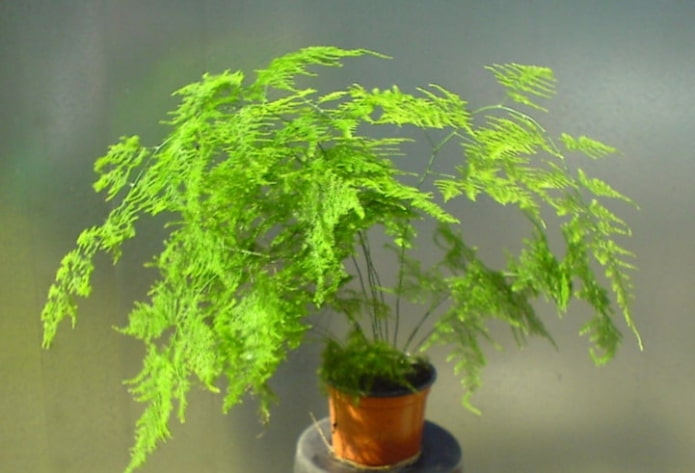
Jade plant
This is a shrubby succulent plant native to South Africa. In natural conditions, they are very large and reach a height of 180 cm, but when grown in small containers they remain compact. At the same time, they develop well and form flowers during the growing season.
The oval-leaved Crassula forms a bush of woody shoots, strewn with many wedge-shaped leaves of a dark green color. There is often a reddish edging on the edges of the leaf blades. In the autumn-winter period, small white or pink flowers form on the shoots.
The fat woman is unpretentious, but prefers warmth and a lot of diffused light. In summer, it needs regular moderate watering, but does not require moistening in winter. During the dormant period, the air temperature should not rise above +12°C, but excessive cold leads to the death of the root system.
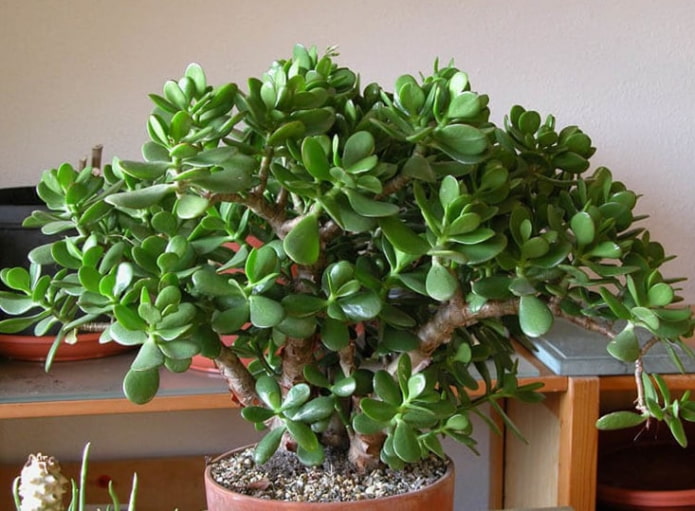
Fittonia lebucoides
The indoor plant Fittonia lebucoides is a spreading evergreen perennial plant 8-15 cm high. It has a dense crown with dark green oval leaves, the surface of which is dotted with thin veins, mainly silvery-white in color. Although varieties with red and pink patterns are not uncommon.
The plant is not very demanding to the composition of the soil and the temperature of the environment, but it reacts very sensitively to drying out or over-watering. It needs timely moderate watering, otherwise it will begin to quickly wither and die.
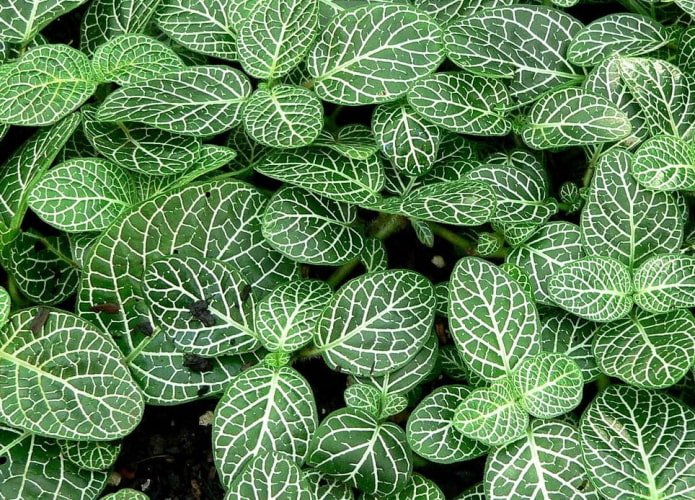
Cryptanthus bistripedus
This is a slow-growing shrub that forms a compact star-shaped rosette of green leaves with a light stripe running down the center. The height of a mature plant does not exceed 20 cm.
Cryptanthus bistripes is a tropical plant that is difficult to care for. It is placed in a pot with good drainage and moved around the apartment during the day to protect it from excess or lack of sunlight. It rarely blooms even with good care.
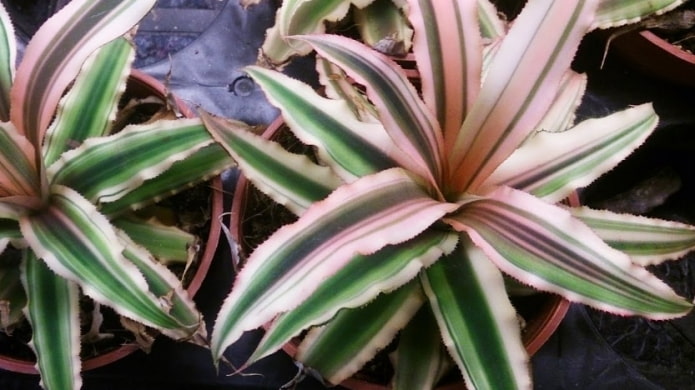
Aphelandra squarrosa
When grown outdoors, Aphelandra squarrosa can reach a height of 180 cm, but when kept indoors, it remains quite compact and does not grow more than 60 cm. Its crown grows strongly only by the end of summer, when large bright yellow flowers are formed.
Aphelandra is capricious, so it is not suitable for novice gardeners. Like Cryptanthus bistripedis, it needs sufficient light, but is very sensitive to its excess.
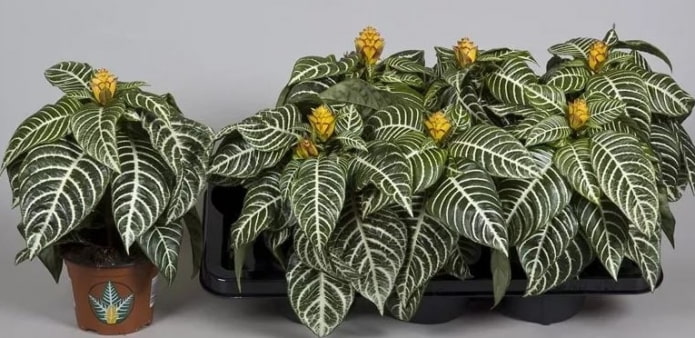
Portulacaria africana
In the natural environment, this succulent can reach a height of 4.5 m, but when grown indoors, it remains small and does not exceed 30 cm. To do this, it must be trimmed correctly and in a timely manner.
Portulacaria africana has a woody shoot with beautiful brown bark and a crown of small fleshy leaves. This is one of the few succulents that is often preferred by bonsai masters.
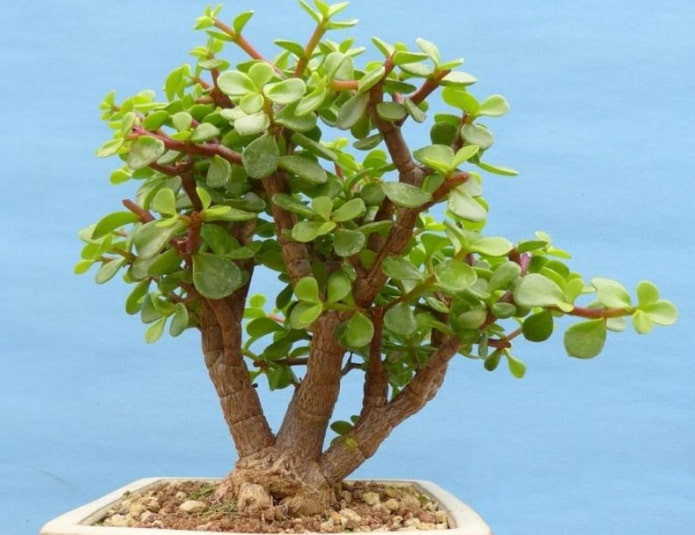
Air Plants
Tillandsias are epiphytes or lithophytes that grow on the surface of trees or rocks. Therefore, they are not planted in the ground, but are often placed in terrariums or suspended from the ceiling. With regular watering they develop well and do not experience discomfort.
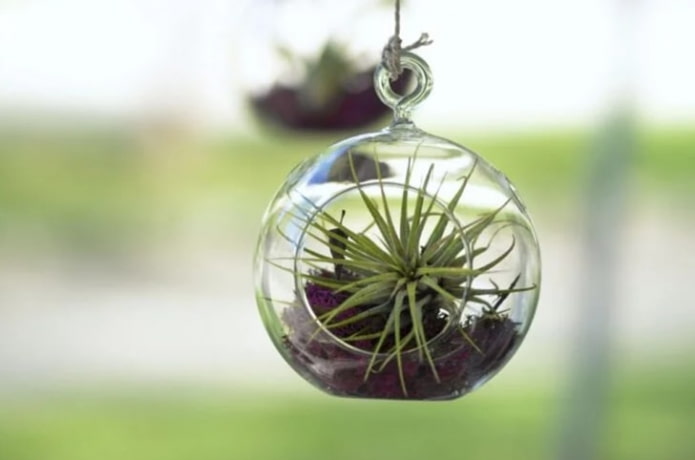
There are hundreds of varieties of air plants, and most of them are miniature. They form leaf rosettes from 5 to 30 cm high.
Now reading:
- 15 Ways to Make the Most of an Empty Corner in Your Home
- Black Tile in the Bathroom: 50+ Ideas for Floors, Walls and Shower Areas
- Curtains for a wooden house: how to choose the perfect design, 80 photos of interiors
- 20 Creative Storage Solutions for Small Spaces
- Country style in the interior (56 photos): unique features and cozy design solutions.